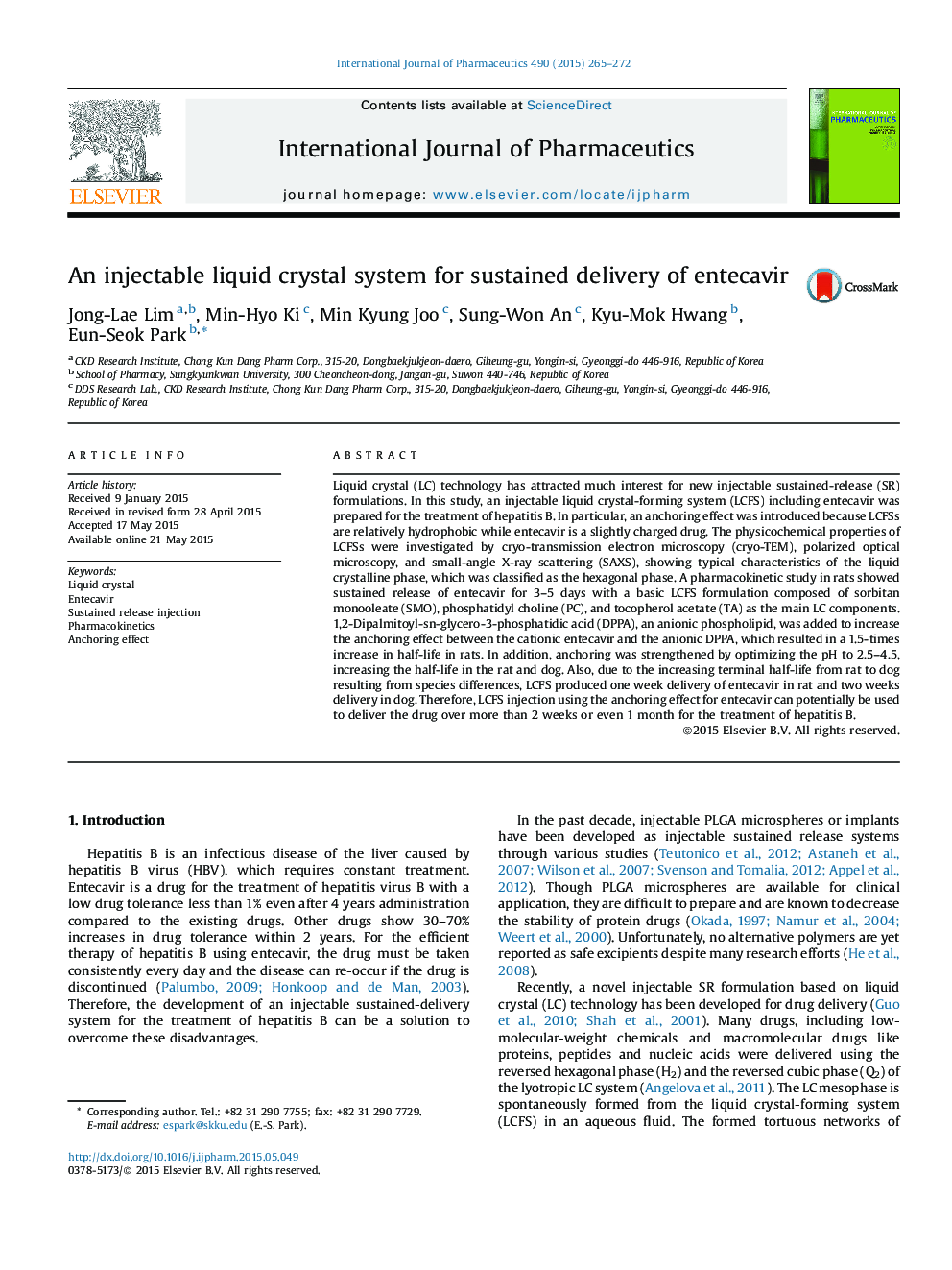| Article ID | Journal | Published Year | Pages | File Type |
|---|---|---|---|---|
| 2501312 | International Journal of Pharmaceutics | 2015 | 8 Pages |
Liquid crystal (LC) technology has attracted much interest for new injectable sustained-release (SR) formulations. In this study, an injectable liquid crystal-forming system (LCFS) including entecavir was prepared for the treatment of hepatitis B. In particular, an anchoring effect was introduced because LCFSs are relatively hydrophobic while entecavir is a slightly charged drug. The physicochemical properties of LCFSs were investigated by cryo-transmission electron microscopy (cryo-TEM), polarized optical microscopy, and small-angle X-ray scattering (SAXS), showing typical characteristics of the liquid crystalline phase, which was classified as the hexagonal phase. A pharmacokinetic study in rats showed sustained release of entecavir for 3–5 days with a basic LCFS formulation composed of sorbitan monooleate (SMO), phosphatidyl choline (PC), and tocopherol acetate (TA) as the main LC components. 1,2-Dipalmitoyl-sn-glycero-3-phosphatidic acid (DPPA), an anionic phospholipid, was added to increase the anchoring effect between the cationic entecavir and the anionic DPPA, which resulted in a 1.5-times increase in half-life in rats. In addition, anchoring was strengthened by optimizing the pH to 2.5–4.5, increasing the half-life in the rat and dog. Also, due to the increasing terminal half-life from rat to dog resulting from species differences, LCFS produced one week delivery of entecavir in rat and two weeks delivery in dog. Therefore, LCFS injection using the anchoring effect for entecavir can potentially be used to deliver the drug over more than 2 weeks or even 1 month for the treatment of hepatitis B.
Graphical abstractFigure optionsDownload full-size imageDownload high-quality image (149 K)Download as PowerPoint slide
